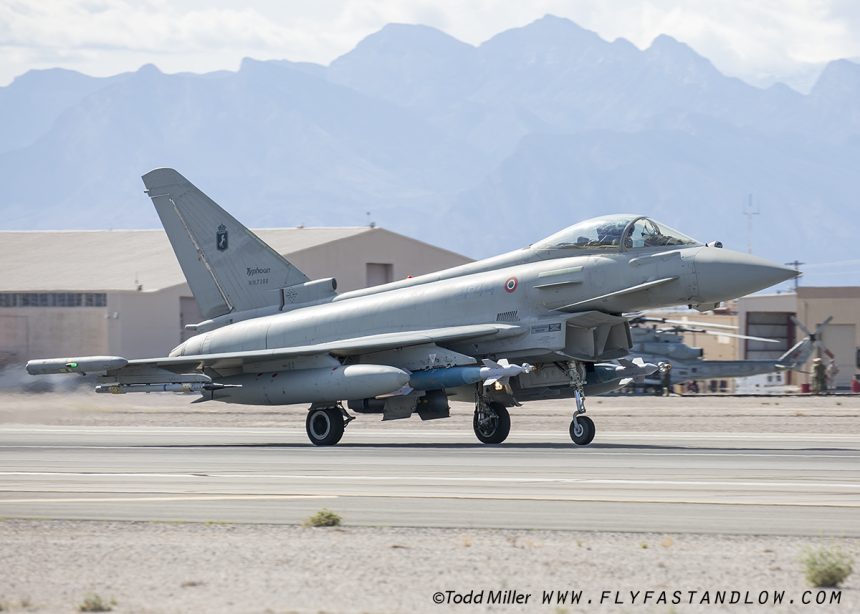Red Flag 16-2 explained.
The second Red Flag of 2016 featured an international coalition training against a dynamic and integrated “Red Adversary” Force.
The exercise, running from Feb. 29 to Mar. 11 included some 23 units representing the US Air Force, Army, Navy, Marines and contingents from NATO partners: the Aeronautica Militare (AM – Italian Air Force) and the Turkish Air Force (TAF).
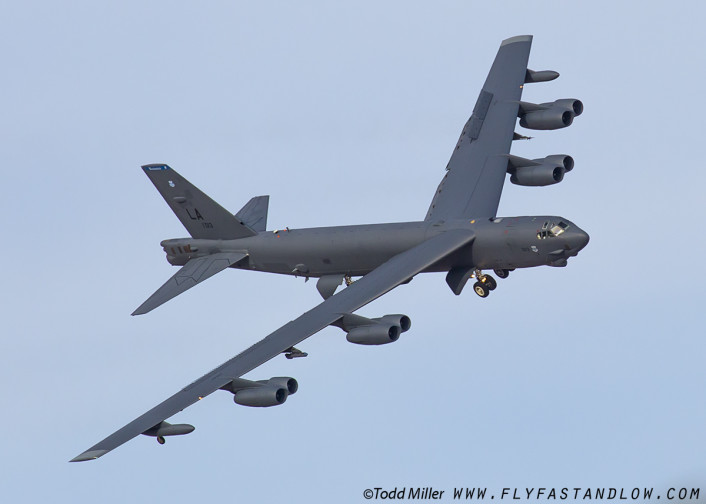
Participating units launched from Nellis AFB in Las Vegas, and trained over the 2.9 million acres of land, and 12,000 sq miles of airspace afforded by the Nevada Test and Training Range (NTTR).
All told, some 75 aircraft (and 1700 personnel) participated in the exercise including eight Italian Eurofighter Typhoons (or F-2000A, as the aircraft is designated in Italy) at their first Red Flag and the Turkish Air Force contingent made of six F-16s and two KC-135R tankers. The US team included the F-16CM, F-15E, F-15C, E-3G a variety of helicopters, drones (MQ-9), tankers (KC-135R) specialized aircraft and 2 of the 3 Global Strike Command bombers, the B-52H and B-1B. The wide variety of aircraft are typical of a coalition force should it be thrust into battle.
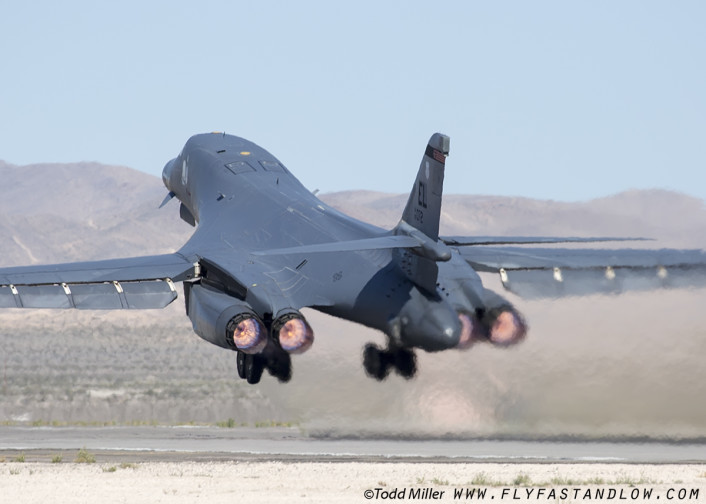
The Red Air units included dedicated F-16C Aggressor units supplemented by AT-38Cs from the 435th FTS of Randolph AFB and the 88th FTS of Sheppard AFB, participant in the Euro-NATO Joint Pilot Training Program.
Fast and exhibiting a very small radar cross section, the AT-38C is representative of the aircraft that many potential adversaries utilize today. Often overlooked, the Red Adversary Force includes ground assets that are very real threats.

Colonel A. Bernard AEW Commander for Red Flag 16-2 indicated that “the Red Adversary is an advanced, agile and integrated force that includes both air and surface threats, acts like a country, and the combined assets create the finest adversary that we could ever face.”
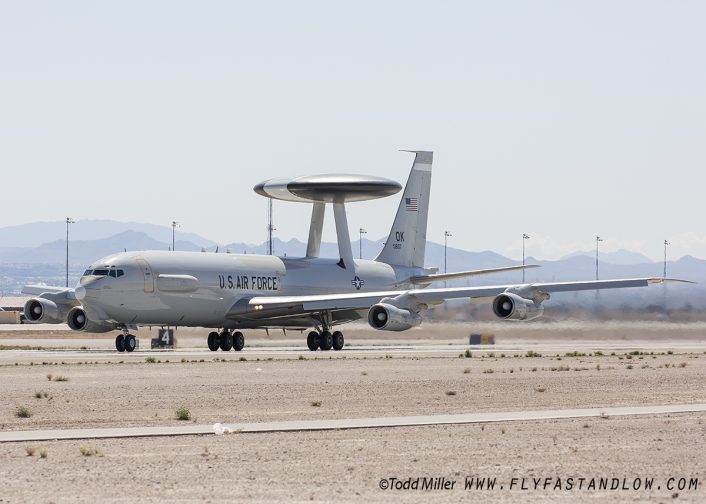
While never long on details, suffice it to say there are radar emitters, SAM (Surface to Air Missile) sites, and a number of other challenging weapon systems (the participation of a virtual Patriot battery implies involvement in neutralizing surface to surface missiles fired by the Red Adversary) that the Blue Force must either avoid, or neutralize during each of the approx. 10 night and day sorties of the exercise.
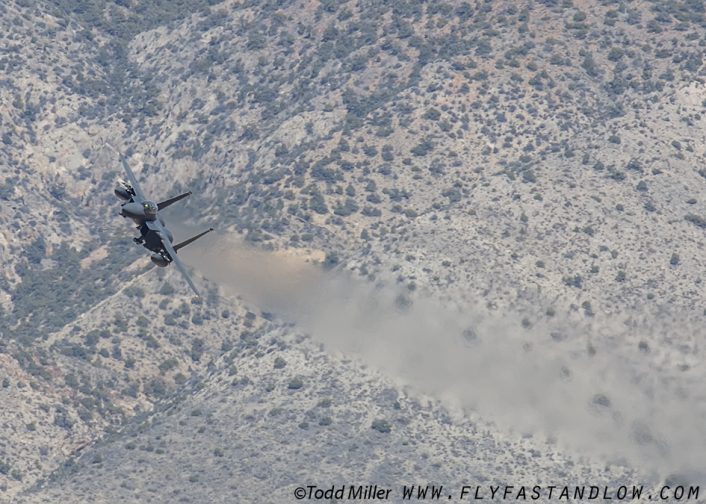
Mission sets flown by Blue Force include Close Air Support (CAS), Air to Ground (A2G), Air to Air (A2A), Suppression of Enemy Air Defense (SEAD), Dynamic Targeting, Personnel recovery and more.
One of three command and control (C2) groups, a Marine Air Control Squadron (MACS-1) coordinated aircraft movement and tasking within their designated area. C2 functions were also performed by the 726th Air Control Squadron and in the air by the 963rd Airborne Air Control Squadron flying the E-3B/C/G. The US Navy was represented by the HCS-21 “BlackJacks” flying the MH-60 in primarily a personnel recovery mission.
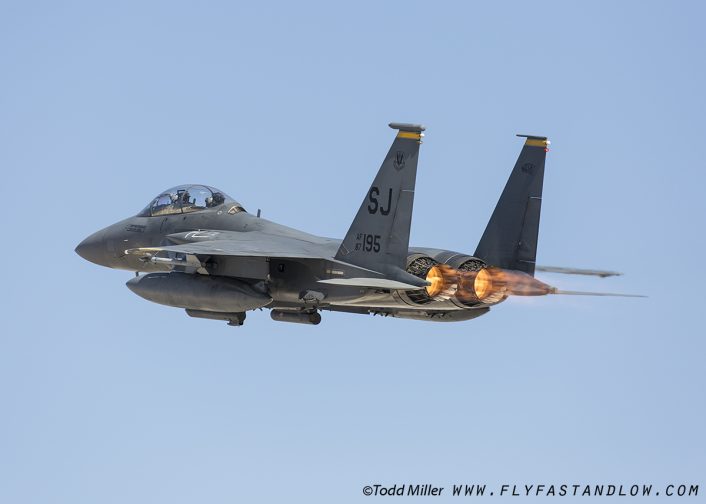
The Turkish Air Force utilized the multi-role F-16 to its full spectrum in the exercise, while the Italian AM primarily used the F-2000 in an Air to Air role, though a couple of F-2000s were utilized in a swing role, carrying Litening targeting pods and dropping inert GBU-16 Paveway IIs on designated range targets. Colonel M. Bertoli, the Italian AM detachment commander, indicated that this is not the primary role the AM plans for the F-2000, however they are validating the capability for select operations and to support the ongoing export initiatives of the Eurofighter Typhoon.
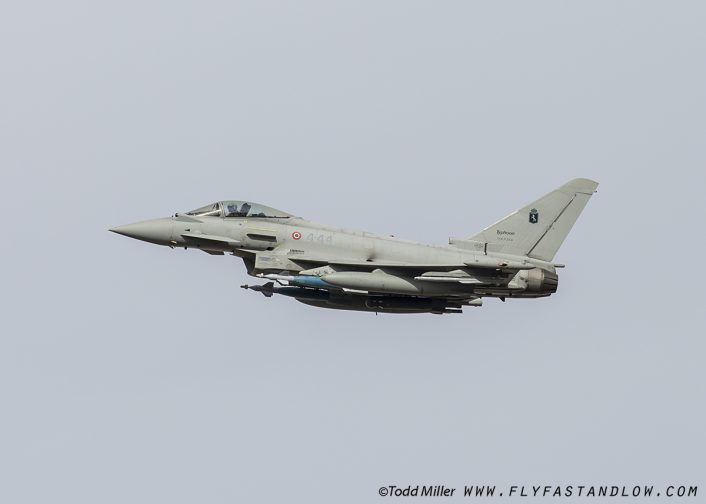
Col. Bertoli indicated that “we consider it [Red Flag] the best training, so we brought our young pilots so they can train our Typhoon force for years come. The AM thinks that this [Red Flag] is by far one of the best combat training environments our pilots can find all over the world. So we committed ourselves and the Typhoons to train our pilots and to integrate them with our NATO partners to give them the possibility to have a great training and be ready of course for future operations with our NATO partners.”
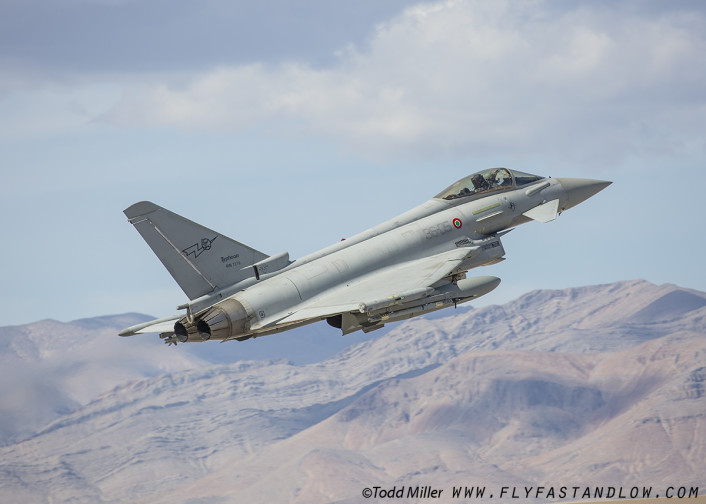
Over the NTTR, aircraft were observed in carefully choreographed missions. The F-2000s primarily took on the battle for air supremacy from the advantage of high altitude, working with F-16s on Combat Air Patrol. F-16CMs moved in from medium altitudes to perform SEAD, followed by F-15Es from medium altitudes along with additional F-15Es and F-2000s from low altitudes attacking designated targets.
B-1B bombers appeared from medium or low altitude to attack their targets, while B-52Hs made target runs, turned, loitered and then attacked again and again.
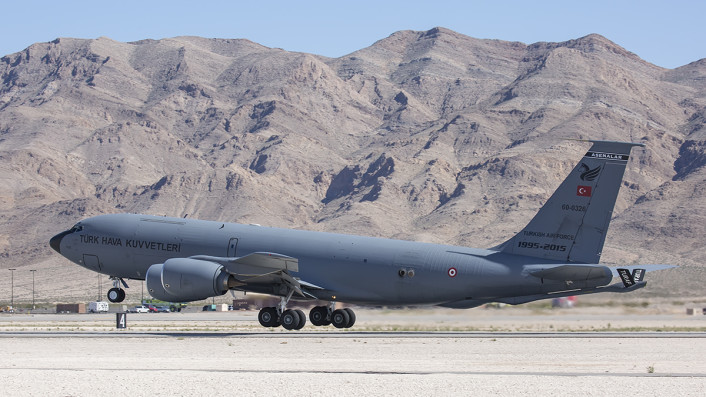
Red Air threats had multiple lives and regenerated when killed ensuring a constant adversarial threat. Attack, counter attack, identify targets and vector assets to kill or be killed. The intensity of the battle was noted in pilots and C2 voices as radio chatter flooded the airwaves during the 75 – 90 minute battle.
Captain R. Kearns, B-1B pilot from the 34th Bomb Squadron noted that while the missions were not typically different from what they normally train (medium and low altitude attack), it was unique to have so many diverse aircraft in the operating area and to look out on the B-1Bs wing and note the F-16 and F-15 escorts.

The exercise itself is only the beginning of learning. After the mission, a lengthy debriefing takes place. The briefing is aided by the enhanced capability on the Nellis Range and by the recently launched E-3G that features the ability to clearly reconstruct the C2 activity. Major C. Bulla of 414th Combat Training Squadron summarized succinctly, “better data, better learning, that’s why we are here.”
Col. Bernard defined the exercise well, “it is in fact putting together the team you have and use each strength to make 1+1 = 3.” Mathematically impossible, but attainable within the context of synergistic teamwork.
Todd Miller is an avid photographer and contributor to a number of Aviation media groups. Utilizing www.flyfastandlow.com as a personal “runway” it is Todd’s goal to reflect the intensity and realism of the military aviation mission, as well as the character and commitment of the military aviation professional.

